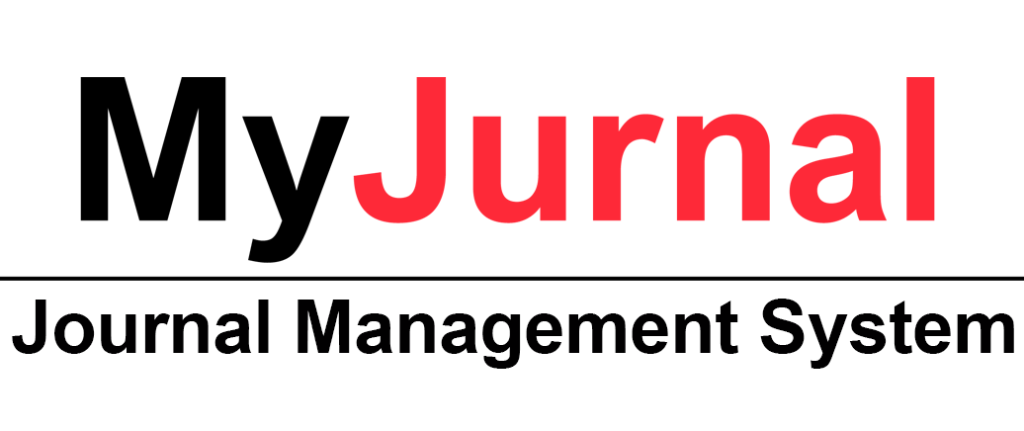📢 Call for International Advisory Board Members
The IIUM Journal of Educational Studies (IJES) is pleased to announce an open call for qualified scholars and professionals to join our International Advisory...
Manuscript Submission Guidelines PDF
1. Cover letter: All submissions should be submitted with a cover letter by the relevant author, which can be referred to from here.
2. Language:Articles should be written in jargon-free English with sufficient but not excessive documentation. This is to ensure easy comprehension of the articles by readers from diverse disciplines.
3. Copyright:Submission of a manuscript implies: that the work described has not been published before; that it is not under consideration for publication anywhere else; that its publication has been approved by all co-authors, if any, as well as by the responsible authorities – tacitly or explicitly – at the institute where the work has been carried out. The publisher will not be held legally responsible should there be any claims for compensation.
4. Length and Typing:Manuscripts (articles) should be approximately 5,000 to 7,000 words. Longer manuscripts will be considered only in exceptional circumstances. Submission of articles should be typed in single spacing (including notes and references).
5. Title Page:The title page should highlight title of article, author(s) names, affiliations and contact details (including email addresses). If there are multiple authors, kindly indicate clearly the corresponding author’s details. The title page should also include a short bibliographical note (not more than 50 words), outlining the ‘essence’ of the manuscript. Also indicate the exact length of the manuscript. To facilitate the review process, author`s details should not appear in other parts of the manuscript other than the title page. The Abstract should appear on the next page. A sample of title page is here.
6. Order of the Manuscript Pages:Arrange the pages of the manuscript as follows: Title page, abstract, introduction, methodology , results, discussion, conclusions, acknowledgements, funding and references. Authors may download the manuscript template from the website.
7. General Agreement:The Journal will own copyright to all published works and have the right of first publication, both in print and online, unless other arrangements are made with the Editors in advance. It is the author`s responsibility to ensure that where copyright materials are included within an article the permission of the copyright holder has been obtained beforehand.
8. Submission:Manuscripts (in Microsoft Word or PDF formats) should be submitted as electronic files to the IIUM Journal of Educational Studies (IJES). Authors must register on the IJES platform in order to submit their manuscripts. If authors have additional questions about the submission process, please email at ijes@iium.edu.my.
9. Permissions:Authors wishing to include figures, tables, or text passages that have already been published elsewhere are required to obtain permission from the copyright owner(s) for both the print and online format and to include evidence that such permission has been granted when submitting their papers. Any material received without such evidence will be assumed to originate from the authors.
10. Content of the Manuscript
10.1 Abstract
Articles must be accompanied by an abstract of up to 250 words and a list of five to eight keywords. The abstract should outline the scope, hypothesis or rationale, major findings, novelty and the conclusion of the manuscript. If it is a ‘review’ manuscript, author(s) may not strictly follow the suggested outline.
10.2 Introduction
The introduction should provide a clear background and rationale for the study. State the problem being investigated, its significance, and the theoretical or conceptual framework underpinning the research. Include relevant background information, define key terms, and highlight gaps in the existing literature that your study aims to address. The introduction should lead logically to your research objectives or hypotheses.
10.3 Objectives of the study
Clearly state the objectives or research questions guiding the study. These should be specific, measurable, and aligned with the identified problem. The objectives should clarify what the study aims to accomplish and set the direction for the research design and analysis.
10.4 Literature review
Provide a comprehensive and critical review of existing literature related to your research topic. Summarize key theories, models, findings, and methodological approaches from previous studies. Highlight areas of agreement and contention, identify research gaps, and demonstrate how your study contributes to the body of knowledge. Ensure all sources are properly cited following APA style.
10.5 Methodology
Describe the research design, including the overall approach (e.g., qualitative, quantitative, or mixed-methods), and justify its suitability for the study objectives. Clearly explain the procedures for selecting participants or data sources, the instruments or tools used, and the procedures for data collection. Provide enough detail to allow replication of the study.
10.6 Data collection and analysis
Detail how data were collected and analysed. Describe the sampling methods, data collection instruments (e.g., surveys, interviews, observations), and the process of data handling. Specify the statistical tests or qualitative analysis methods applied, including software used if applicable. Explain how reliability and validity were ensured..
10.7 Research Ethics
Include a statement on ethical considerations, such as informed consent, confidentiality, and approval from relevant ethics committees or institutional review boards. Describe measures taken to protect participants' rights and data privacy.
10.8 Results (quantitative study) / Findings (qualitative study)
Present the findings objectively and systematically, using tables, figures, and text as appropriate. Do not interpret or discuss the findings in this section; focus on reporting the results of your analysis.
Ensure that all figures and tables follow APA formatting guidelines and are properly referenced in the text. Elaborate on the key patterns, themes, or discoveries from the data. Explain how these findings relate to the research questions or objectives. Support findings with quotes, narratives, or illustrative data where applicable (especially for qualitative studies).
10.9 Discussion
Interpret the results in the context of the research objectives, theoretical framework, and existing literature. Discuss the implications, limitations, and possible alternative explanations. Highlight how the findings advance knowledge in the field, practical applications, and suggestions for future research.
10.10 Conclusion and recommendations
Summarize the main findings and their implications. Offer clear and actionable recommendations for practice, policy, or further research, based on your study’s findings. Avoid introducing new data in this section.
10.11 Acknowledgements
Acknowledge individuals, institutions, or funding bodies that contributed to the research but do not qualify for authorship. Disclose any financial support, technical assistance, or professional advice received.
10.12 References
List all sources cited in the manuscript, formatted according to the latest APA style guidelines (currently APA 7th edition). Ensure accuracy and consistency in all entries, including author names, publication dates, titles, and DOIs or URLs where applicable.
11. Format
11.1 Tables & Figures:
Tables and figures should be presented in 7th Edition APA Style format.
Tables should be numbered consecutively (e.g., Table 1, Table 2) and include a concise, italicized title below the number. Column headings should be clear and concise, with data centered or left-aligned.
Figures (graphs, charts, images) should be numbered similarly (e.g., Figure 1, Figure 2) and include an italicized title below the number. Any necessary explanatory notes should be placed below the figure.
11.2 Reference Citations
All entries in the reference list must be cited in text according to APA 7th Edition format. Cite references in text using the author-date method [e.g., Stiglitz (1999)].
If a work has two authors, always cite all the names every time the work is referred to in the text. For works with three or more authors, use only the name of the first author followed by “et al.” and the year whenever the work is cited (in the reference list, however, all names must be given). Page numbers should be provided when specific arguments or findings of authors are paraphrased, summarised, or directly quoted.
Example: Low and Yong (2020, p. 121-5) argue that . . .
11.3 Reference List
The list of references should only include works that are cited in the text and that have been published or accepted for publication. Do not use footnotes or endnotes as a substitute for a reference list. Reference list entries should be alphabetized by the last names of the first author of each work.
The following are examples of references commonly used by authors.
Journal Article (see https://apastyle.apa.org/style-grammar-guidelines/references/examples/journal-article-references )
Edwards, A. A., Steacy, L. M., Siegelman, N., Rigobon, V. M., Kearns, D. M., Rueckl, J. G., & Compton, D. L. (2022). Unpacking the unique relationship between set for variability and word reading development: Examining word- and child-level predictors of performance. Journal of Educational Psychology, 114(6), 1242–1256. https://doi.org/10.1037/edu0000696
Dissertation From a Database (see https://apastyle.apa.org/style-grammar-guidelines/references/examples/published-dissertation-references )
Horvath-Plyman, M. (2018). Social media and the college student journey: An examination of how social media use impacts social capital and affects college choice, access, and transition (Publication No. 10937367) [Doctoral dissertation, New York University]. ProQuest Dissertations and Theses Global.
Online Magazine Article
Thomson, J. (2022, September 8). Massive, strange white structures appear on Utah’s Great Salt Lake. Newsweek. https://www.newsweek.com/mysterious-mounds-great-salt-lake-utah-explainedmirabilite-1741151
Authored Book (see https://apastyle.apa.org/style-grammar-guidelines/references/examples/book-references )
Kaufman, K. A., Glass, C. R., & Pineau, T. R. (2018). Mindful sport performance enhancement: Mental training for athletes and coaches. American Psychological Association. https://doi.org/10.1037/0000048-000
Report by a Group Author (see https://apastyle.apa.org/style-grammar-guidelines/references/examples/report-government-agency-references )
World Health Organization. (2014). Comprehensive implementation plan on maternal, infant and young child nutrition. https://apps.who.int/iris/bitstream/handle/10665/113048/WHO_NMH_NHD_14.1_ eng.pdf?ua=1
Conference Session
Davidson, R. J. (2019, August 8–11). Well-being is a skill [Conference session]. APA 2019 Convention, Chicago, IL, United States. https://irp-cdn.multiscreensite.com/a5ea5d51/files/uploaded/APA2019_ Program_190708.pdf
Open Educational Resource
Fagan, J. (2024, February 7). Nursing clinical brain. OER Commons. Retrieved June 2, 2024, from https://www.oercommons.org/authoring/53029-nursing-clinical-brain/view
Webpage
Taras, Z. (2024, May 30). Situational irony can be funny, tragic or even terrifying. Howstuffworks. https:// entertainment.howstuffworks.com/arts/literature/situational-irony.htm
The Journal will own copyright to all published works and have the right of first publication, both in print and online, unless other arrangements are made with the Editors in advance. It is the author`s responsibility to ensure that where copyright materials are included within an article the permission of the copyright holder has been obtained beforehand.
The names and email addresses entered in this journal site will be used exclusively for the stated purposes of this journal and will not be made available for any other purpose or to any other party.











The IIUM Journal of Educational Studies (IJES) is pleased to announce an open call for qualified scholars and professionals to join our International Advisory...